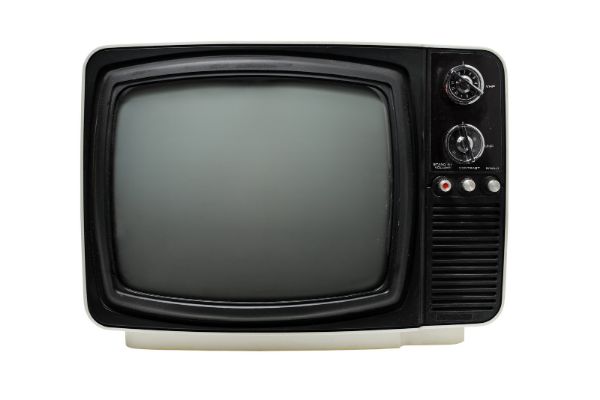Disclaimer: This post may contain affiliate links, meaning we get a small commission if you make a purchase through our links, at no cost to you. For more information, please visit our Disclaimer Page.
When CRT monitors cross the minds of most people, all they’ll probably remember is how its weight nearly broke their backs. This may be true, but CRT monitors has a nostalgic quality. For this reason and other reasons, they seem to gain tremendous momentum in the retro gaming industry.
Table of Contents
Why Are Crt Monitors Being Phased Out?
CRT monitors and TVs phased out in the mid-2000s and were gradually replaced with flat-screen TVs, which upgraded HD-capable.
Many people abandoned their CRT monitors for LCDs primarily for convenience purposes. CRT monitors are bulky and weighty and can be quite discomforting. It’s possible people got tired of hauling the heavy-duty from one place to another or LCDs are more visually pleasing.
Aside from their heavy-duty weight, these monitors are expensive and difficult to find nowadays. Their limited availability plays a significant role in influencing their inflated prices.
Although sizable amounts of glass and trace metals are contained in CRT circuitry, they are pretty difficult to recycle.
Another noticeable reason CRT monitors are ditched is their unhealthy side effects. Radiation from their displays can have profound health implications. CRT monitors are no longer recommended when you consider that their high radiation can cause damage to your eyes.
The objects displayed on CRT monitors are too close-ranged; staring at them for hours could cause eyestrain. This is because the muscles that converge the eye lens are held in one position for too long.
LED and LCDs displays are much friendlier with the eyes, but increasing their display brightness can harm them. However, you can regulate the level of brightness when using it to keep your eyes comfortable and safe.
The wider a screen is, the larger the surface. A large screen surface means more pressure. The more pressure a screen resists, the more depth its glass will have. That’s the case with CRT TVs.
They’re also heavy because the electrons inside the screen are fired from a wrong angle.
CRT monitors aren’t of much value except for gamers who seem to have discovered some retro benefits. All of its challenges culminate in reducing the appeal for these old-fashioned monitors, hence the reason they’re phasing out.
Will Crt Monitors Make a Comeback?
Recent gamers’ reviews on CRT monitors seem to revive the vintage technology back to the spotlight. Their display resolution is outstanding and better than LCDs when used for gaming. There’s also this feeling of nostalgia playing vintage games even though there’s so many high quality looking titles out there. Unfortunately, even the latest OLED displays don’t stand a chance with CRT monitors’ exceptional results.
These monitors work better for PC players, with phenomenal results. Although performing an excellent CRT setup can be difficult, their prices vary from moderate to very expensive.
CRT monitors don’t work from a steady pixel grid as an LCD would. Instead, the electron radiates light right into the tube. So there’s no noticeable blur, and you don’t have to operate the CRT at any particular local resolution.
You might notice “screen lines” in CRT monitors with lower resolutions. Still, much less resolution game outcomes such as 1280×960 or 1024×768 can look amazing.
Most exclusive CRTs are capable of inputting and processing more impressive resolutions. The freedom from a fixed local resolution is the game-changer here. You can focus on the display quality without worrying about higher-end blurring.
Another benefit is motion resolution. All LCD engineering apply a strategy called “sample and hold”. This technique causes motions to be rendered at an extensively lesser resolution than electrostatic imagery.
You might have observed how left-right panning in soccer games appears blurrier than standing shots on the LCD. That’s an excellent depiction of bad motion resolution- which you won’t experience using a CRT. Motion resolution on CRT is top-notch compared to the more modern technologies.
The whole frame is rendered equally so that a 768p display could provide a more precise motion than a 4K LCD.
Also, there’s no display lag with CRT monitors. Images are fired right onto the screen in a flash, so there’s no delay. In fact, when compared to a 240Hz LCD, the superb mouse pointer responds better. The benefit regarding game response, specifically the mouse’s precise input mechanism, is unmatched.
Overall, you can say that gaming has adapted well to CRT with each passing year. Pictorial presentations have become more natural than they have ever been.
There’s something unique about CRT motion displays that accentuates its realistic impression more. As a result, recent titles on CRTs look fantastic. You also benefit from the high refresh rates whenever you want.
Also, CRT monitors work well with PC hardware as they can operate at a rapid frequency (160Hz and beyond). This depends on the input resolution and display.
PCs have some models that operate at higher frequencies than 50Hz. CRT monitors have a documented average lifespan of about 15 years, whereas LED and LCD TVs have an average of six years.
The resultant effect of CRT monitors during gaming is very satisfying. Currently, top-priced gaming LCDs are working very hard to duplicate CRT’s unique features. Its appealing qualities include low latency, low input lag, and high refresh rates.
Does Anyone Still Make Crt Monitors?
CRT monitors were once desired like the present-day LED TVs because it was the only option back then.
When flat-screen TVs were introduced to the market in the early 2000s, it was welcomed with a rush. Unfortunately, people abandoned their precious CRT monitors, and the decrease in demand affected their production. The Sony company eventually discontinued its last construction plants.
By 2013 even capital markets like India collapsed, and their local producers transitioned to LED TV production. Although they were once considered a hotcake, CRT-based display products are practically a fading technology. One could be sinking their capital if they decide to invest in rebuilding a CRT-based manufacturing company.
Drawbacks of Crt Monitors
Soon after the turn of the millennium, the CRT monitors quickly became obsolete. The technology is old-fashioned and presents some potential health hazards.
Physical Formation
One of the significant challenges is their physical formation. CRT monitors are large, bulky, with a dense weight. For example, the Sony Trinitron FW900 has a 24 inches screen, weighs 42kh, with a 600×550mm footprint, and occupies significant space. If you’re planning to move, it can be a pain to carry.
Input Situation
Another issue of concern is the CRT input condition. These monitors use DVI-I, constituent RGB-BNC, or VGA inputs. There’s the more improved GPU, Titan X Maxwell, or GTX 980.
There is USB-C support, HDMI ports, VGA ports, and Display-Port connections. However, these many options mean that you may spend so much time searching for the option that’ll work with high pixel rates. Of course, that’s if you plan to operate faster than 1920×1200 at 60Hz.
CRTs have limited wide-screen options, including the Sony FW900 with a 16:10 angle ratio. This implies that console gaming isn’t compatible with CRT displays like 4:3 screen or less. Although you can operate consoles on CRT monitors, they’re more suitable for PC players for many apparent reasons. In addition, a lot of games made today may not be compatible with CTR.
The Cost Factor
This lies on both extremes of the margin, depending on the display quality you’ve selected. For example, the FW900b is a famous CRT screen whose size is as big as the price it’s sold for.
On the cheaper side of the margin, 19 inches 4:3 Sony Trinitron G400can be found sold for a couple hundred bucks. Yet this model still looks great. That said, this screen may not be in the best of conditions when purchased, which should be expected.
Screen quality and custom features dwindle with time. Bear in mind that getting the level of image quality you desire requires effort, substantial time, and numerous research.
CRT monitor screens are made of glare and glass, which might be a problem. However, this retro technology can be a piece of work.


